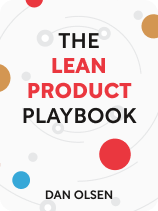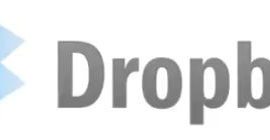

This article is an excerpt from the Shortform book guide to "The Lean Product Playbook" by Dan Olsen. Shortform has the world's best summaries and analyses of books you should be reading.
Like this article? Sign up for a free trial here.
Is your product idea ready for the market? How can you determine which features to include in your minimum viable product (MVP)?
Choosing the right MVP features is crucial for product success. In The Lean Product Playbook, Dan Olsen explores effective methods for brainstorming, evaluating, and prioritizing features.
Continue reading to learn how to create a standout MVP that meets your users’ needs and sets your product apart from the competition.
Choosing Features for Your MVP
Once you’ve created your product’s value proposition and have a clear idea of the needs you want your product to address, it’s time to determine how your product will address those needs and then verify whether your product design actually resonates with your target market. You can do this by building and testing a minimum viable product (MVP).
Creating a fully functional product is time-consuming and risky since you haven’t yet validated whether customers would want to buy it. An MVP is a simplified, bare-bones version of your product. The MVP features and functions will be only the most critical ones needed to validate assumptions about your product. Olsen argues that building an MVP is the fastest and cheapest way to test your hypotheses and gather feedback on your product design. We’ll go through the steps to do so.
(Shortform note: Some experts argue that the business world has gotten more competitive, and creating an MVP—a bare-bones solution with a narrow set of features—might not be enough anymore. Instead, they suggest you create a Minimum Lovable Product (MLP). An MLP goes a step further than an MVP, not only meeting customer needs but instilling a sense of delight by incorporating aspects that customers love—such as appealing visuals or a creative user onboarding experience. Thus, to meet rising user expectations, it may be worthwhile to consider including lovable features when applying Olsen’s MVP validation approach.)
The first step in creating an MVP is to choose which features to include.
First, brainstorm all possible MVP features that could satisfy each need your product will address. Then, select three to five of the best features and write user stories for them. A user story is a brief explanation of a feature from the user’s perspective. They typically follow this format: “As a [type of user], I want to [perform this action] so that I can [desired result].”
For example, “As a music enthusiast, I want to create and share playlists on a music streaming device so that I can share and discover new music with my friends.”
| How to Come Up With Innovative Ideas In 101 Design Methods, Vijay Kumar says that to generate many feature ideas to fulfill customer needs, you and your team shouldn’t evaluate or criticize any ideas during the brainstorming phase—simply focus on coming up with ideas and playing off of one another’s ideas. Kumar suggests you identify and reexamine assumptions about your field to prevent industry conventions and traditional approaches from narrowing your thinking. Similarly, in Tools of Titans, Tim Ferriss suggests you welcome all ideas—both good and bad. To do this, explore even the silliest-seeming ideas, ask dumb questions, and immerse yourself in rich environments that expose you to new ideas, problems, and people. Once you’ve amassed a lot of ideas, you can then stress-test each idea by having everyone challenge it. If an idea still feels worthwhile after heavy criticism, you can consider it a promising idea. |
Once you’ve written user stories for your top feature ideas, calculate the ROI (return on investment) for each feature to determine which are worth pursuing. To do so, subtract the cost of building the feature from the revenue you’d expect to earn by including it, and then divide by the cost to get a percentage.
| How to Estimate Cost and Revenue If you’re not sure how to estimate the cost of developing a feature, consider the advice of Alexander Osterwalder and Yves Pigneur from Business Model Generation. To estimate the revenue you expect to earn, first determine how you’ll generate profits. Olsen doesn’t suggest profit methods, but common methods include: selling physical products, charging a usage fee for a product or service, offering subscription-based services, renting out products and assets, licensing intellectual property, and providing an intermediation or brokerage service. To estimate the cost of developing a feature, assess all of the resources you need for it—consider whether you want to purchase, lease, or borrow them. Osterwalder and Pigneur suggest you consider four categories of resources: • Material—such as raw materials, buildings, factories, vehicles, and machinery • Monetary—such as cash, credit, and stock options • Intellectual—such as brand equity, copyrights, patents, and knowledge databases • Human—such as experienced staff members and specialists Once you’ve identified all of the necessary resources, estimate your expenses. Osterwalder and Pigneur state that your expenses will include at least one of the following characteristics: • Fixed costs—costs that don’t change regardless of the production volume (such as rent or salaries) • Variable costs—expenses that change depending on your level of production (such as raw materials, packaging, direct labor, and distribution costs) • Economies of scale—reductions in the cost per units of a product as your production volume increases • Economies of scope—reductions in the cost of a single resource or activity when you use it for multiple operations or services |
Olsen writes that you should greenlight features with high ROI for your MVP: ones that satisfy all essential needs, the top performance need, and the top bonus need from your value proposition. Including a bonus feature helps your product stand out from competitors.
(Shortform note: There are many prioritization frameworks for product managers you can consider alongside Olsen’s, each with their own pros and cons. The RICE scoring system, for instance, ranks features based on reach, impact, confidence, and effort. Another more interactive method is “Buy a Feature,” where you assign a monetary value to each proposed feature and ask customers to “buy” the features they want, demonstrating which features they view as most valuable. Considering these frameworks in conjunction with Olsen’s can guide you in making effective prioritization decisions.)

———End of Preview———
Like what you just read? Read the rest of the world's best book summary and analysis of Dan Olsen's "The Lean Product Playbook" at Shortform.
Here's what you'll find in our full The Lean Product Playbook summary:
- An entrepreneur’s guide to making the best product on the market
- How to create a new product without gambling on the results
- How and where to find your target market and audience






